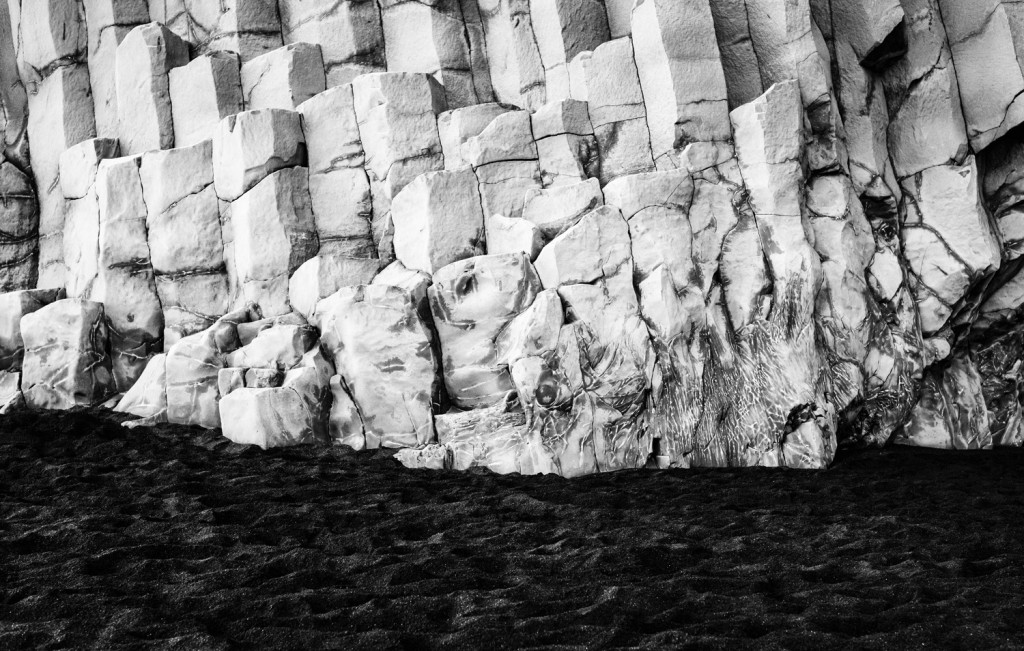
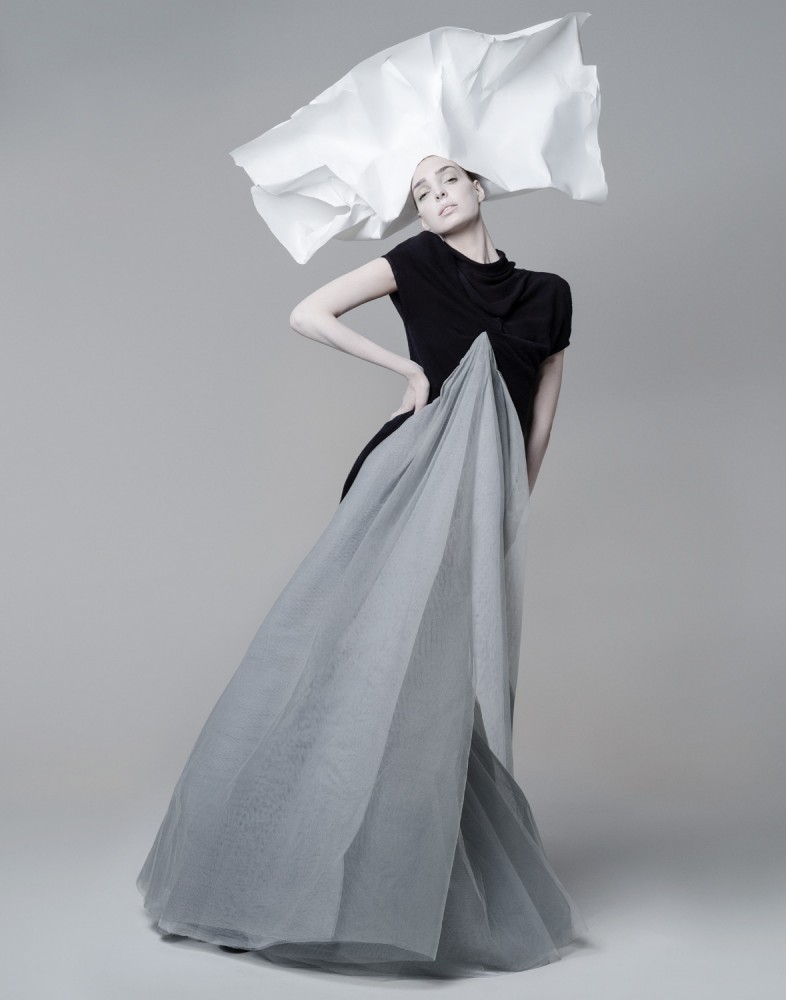
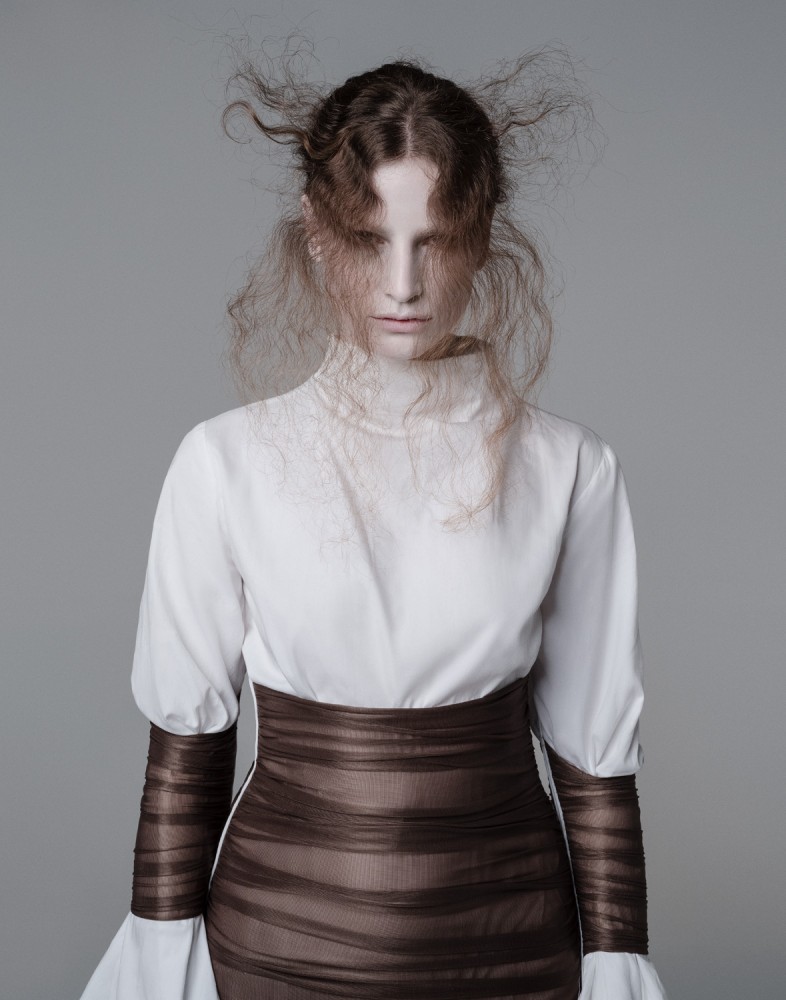
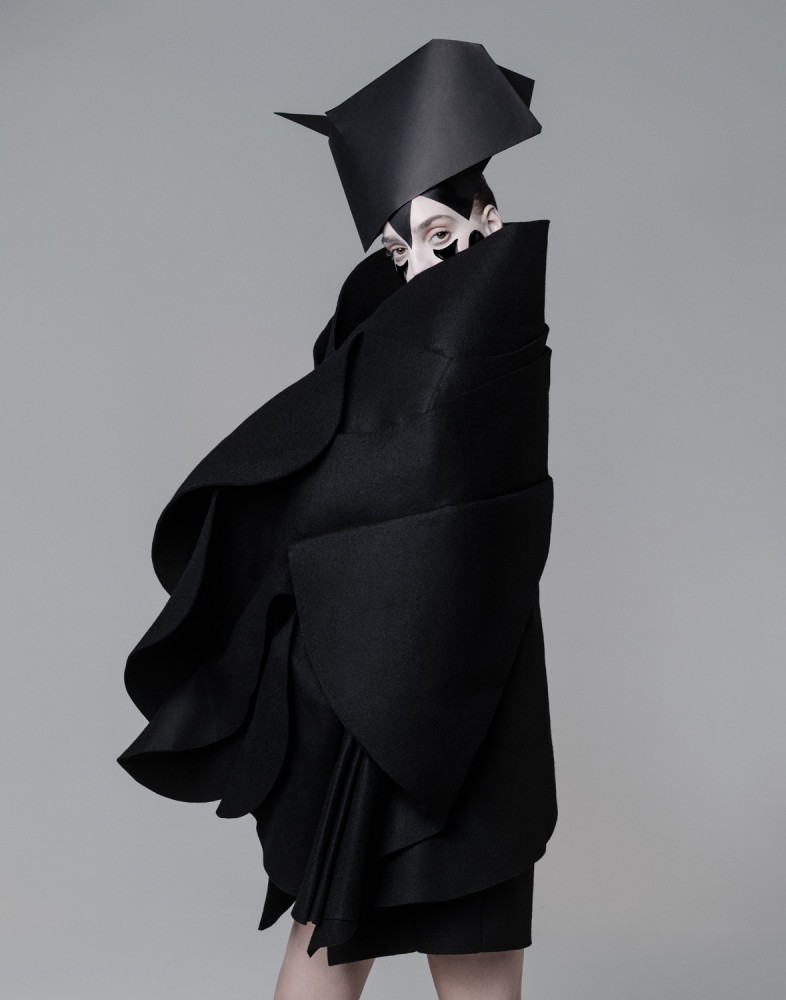
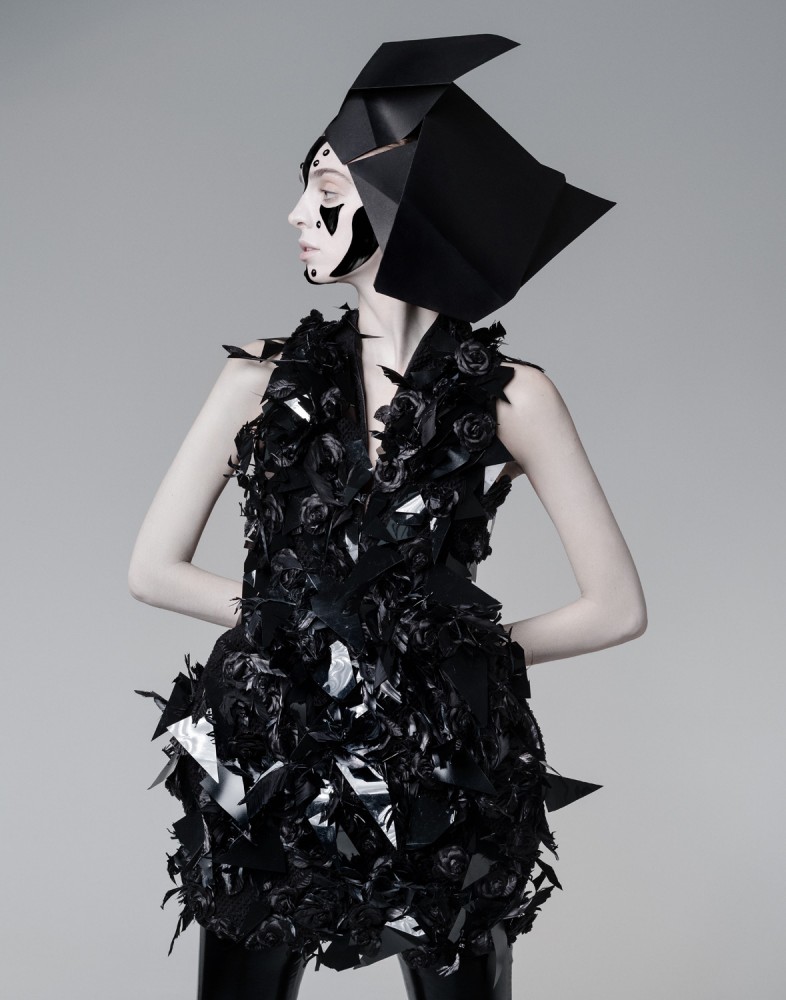
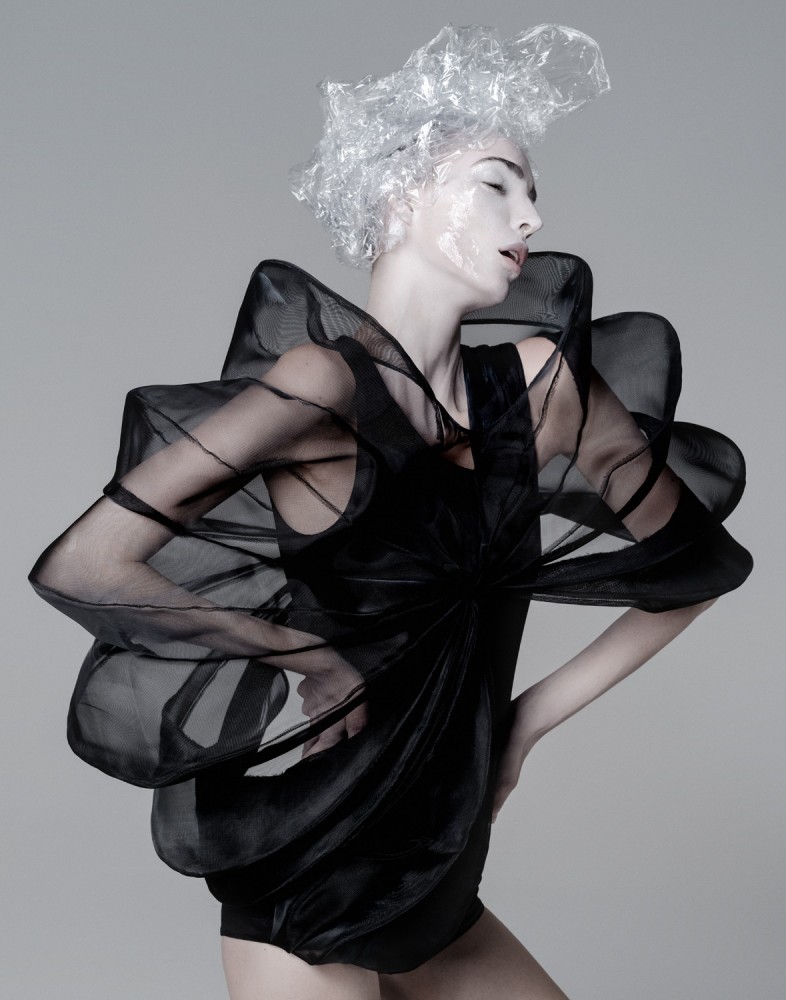
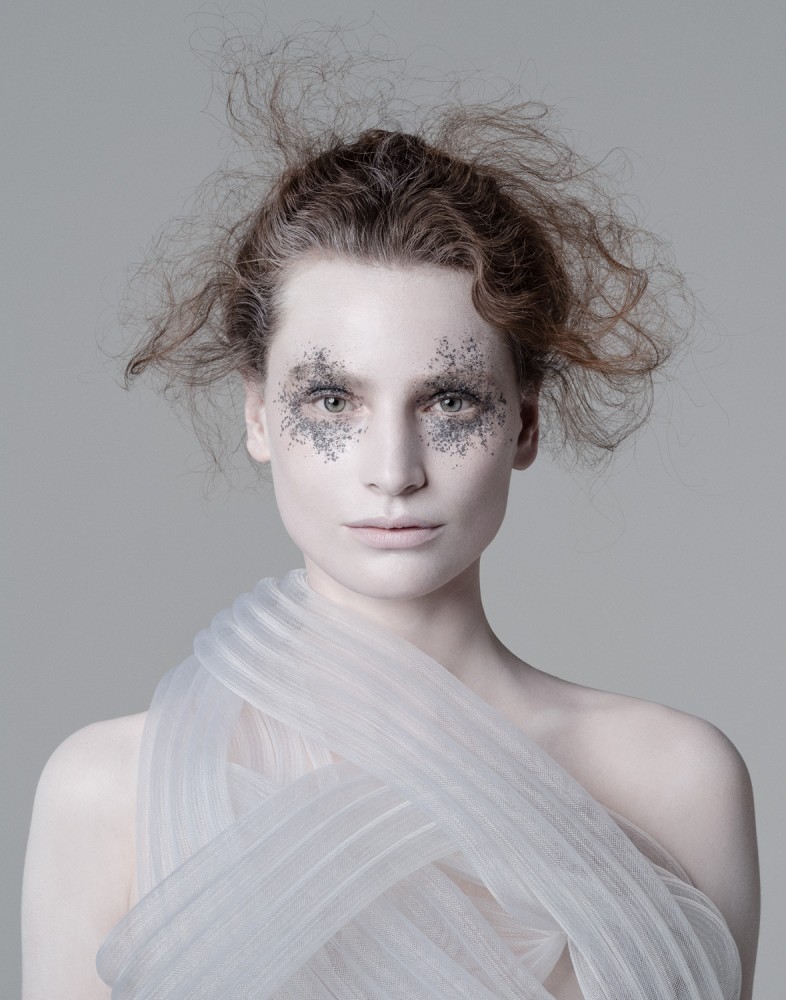
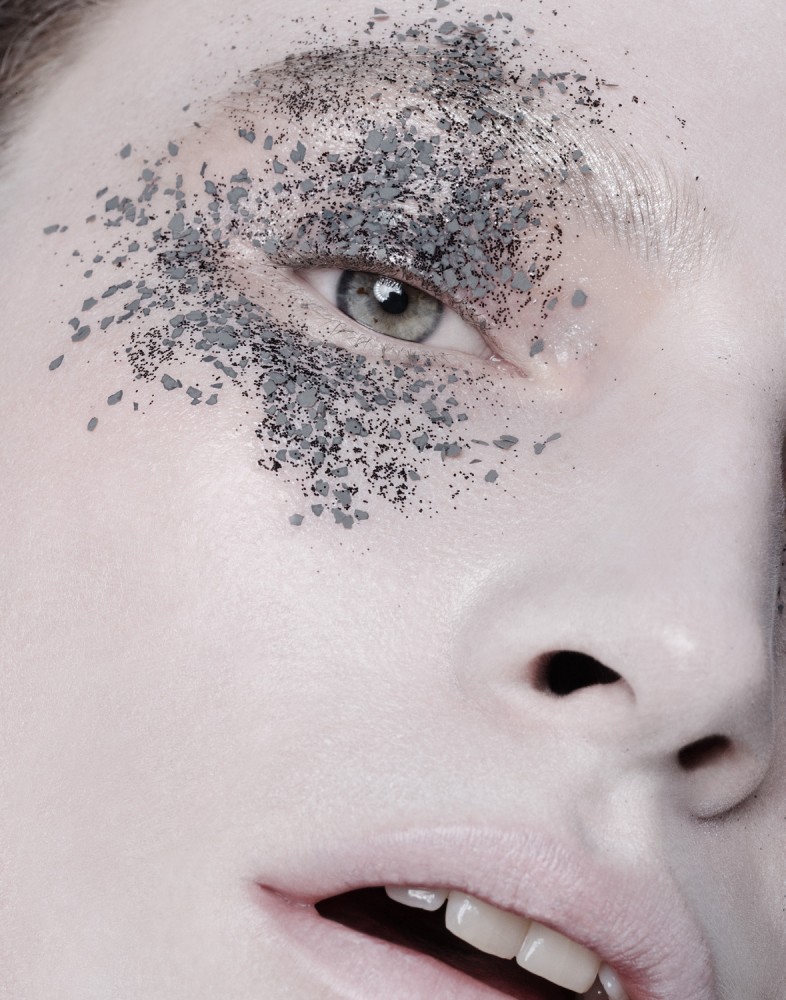
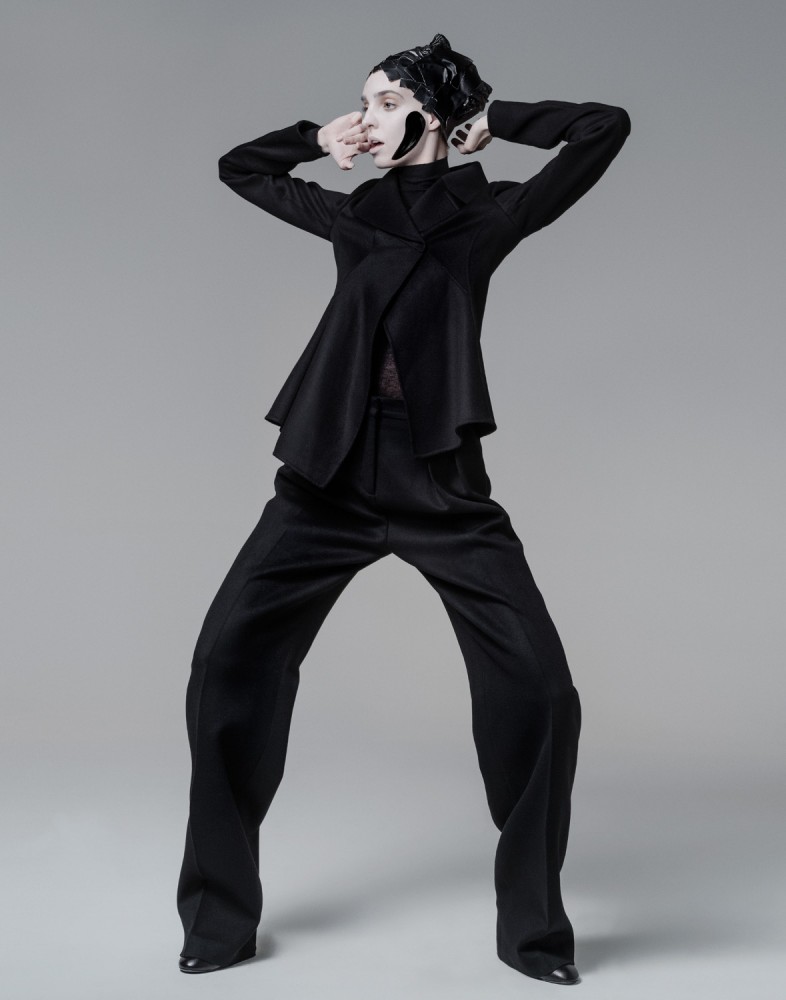
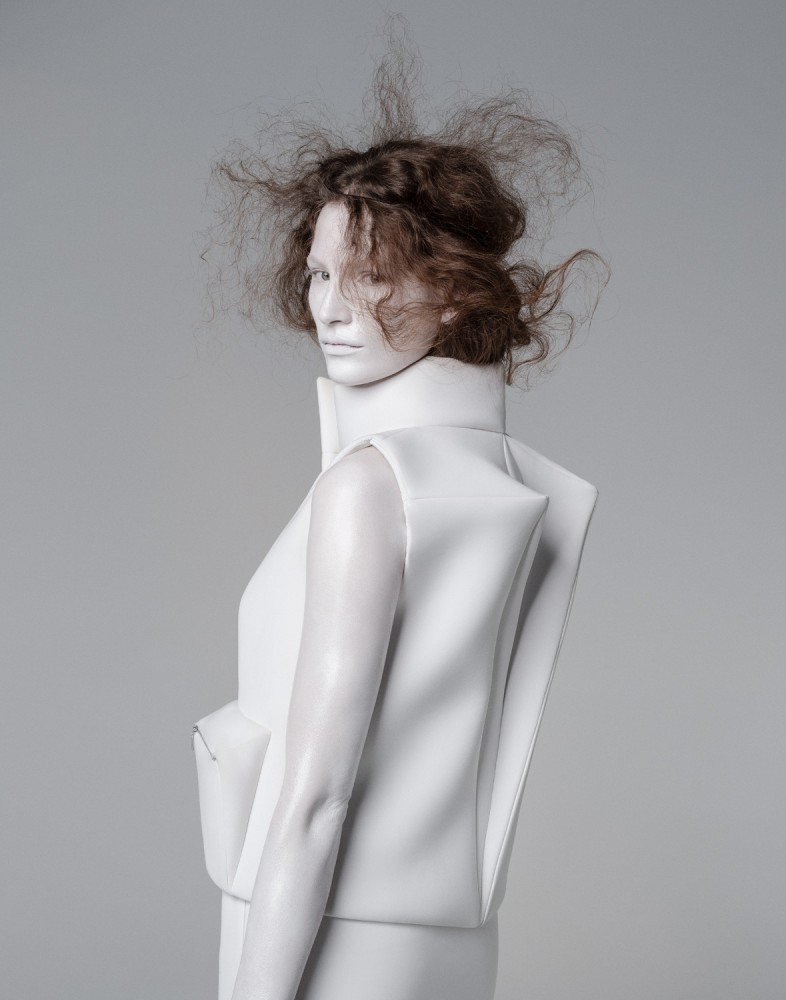
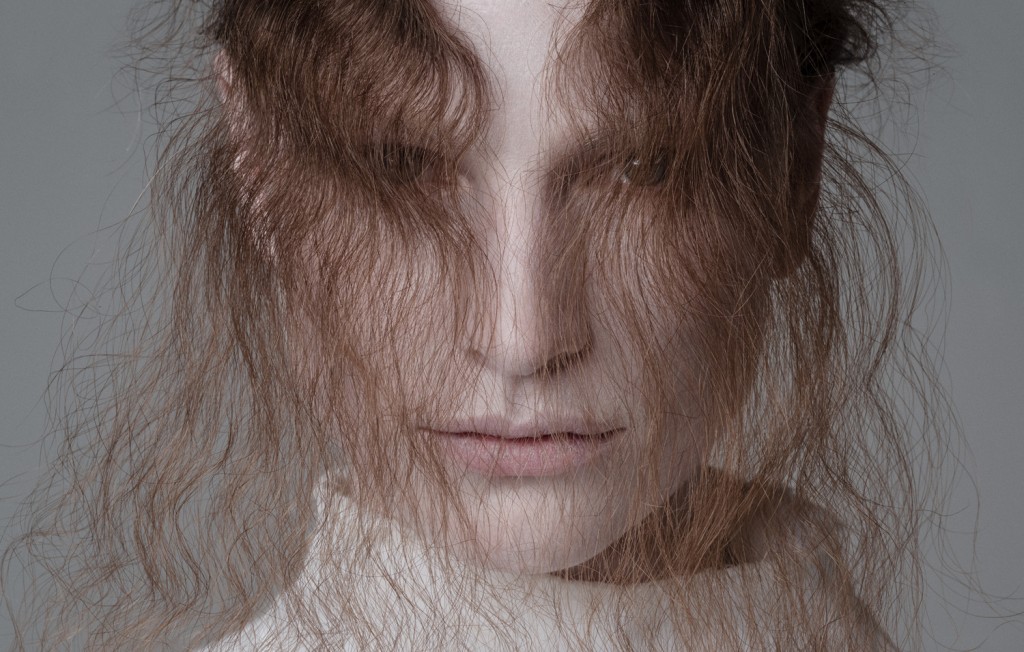
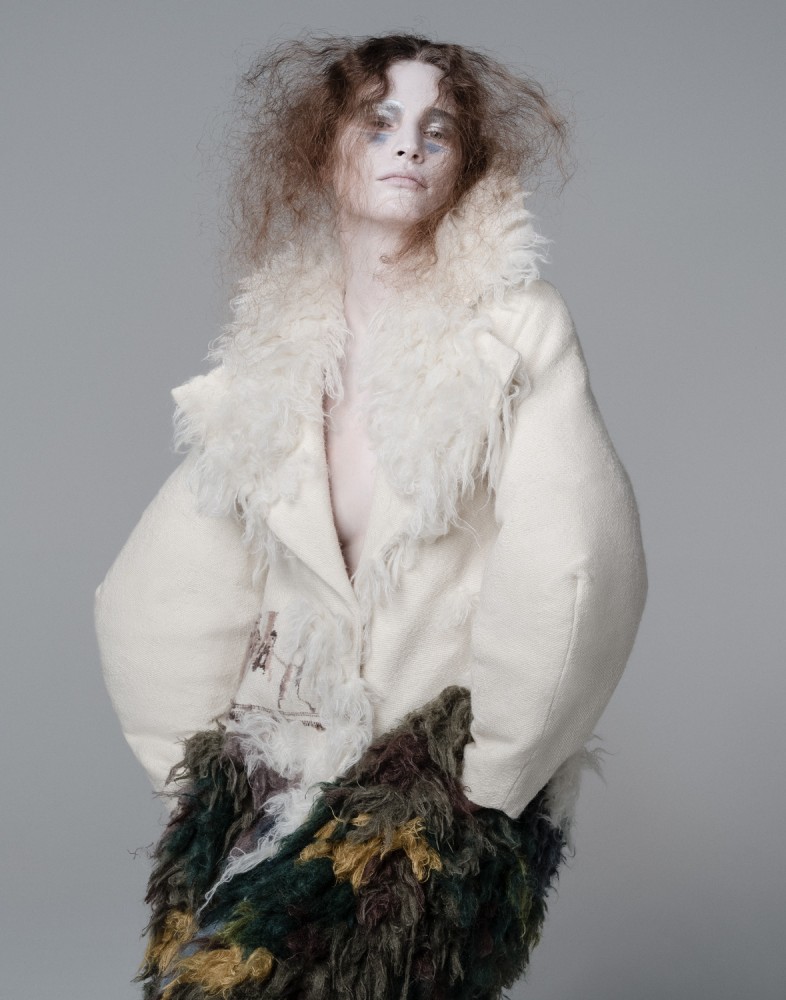

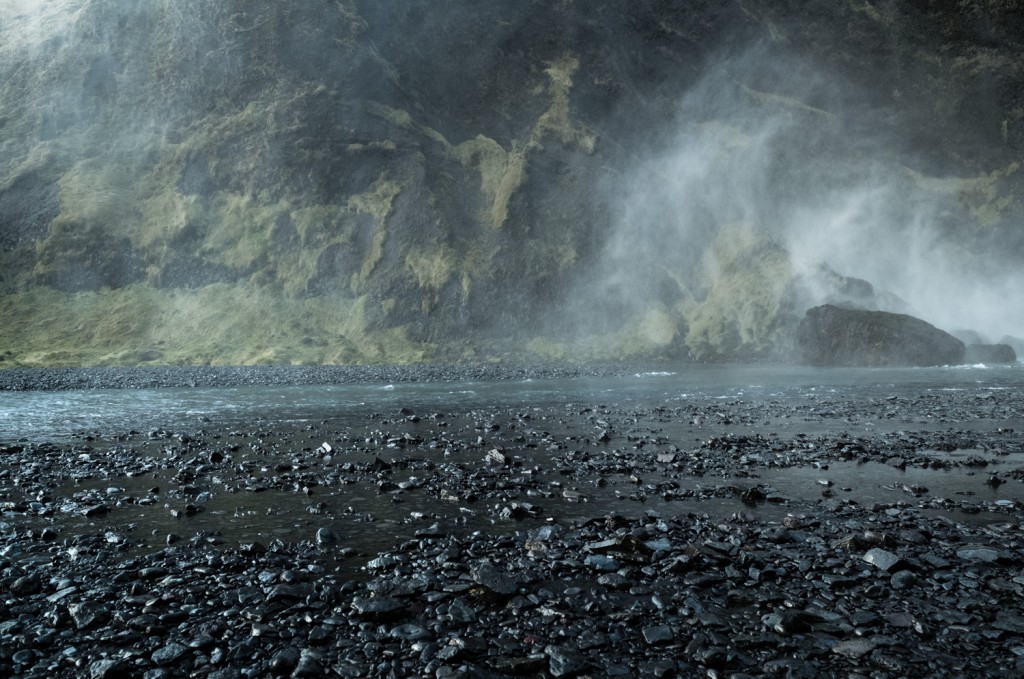














INTERVIEW
Benjamin Kaufmann
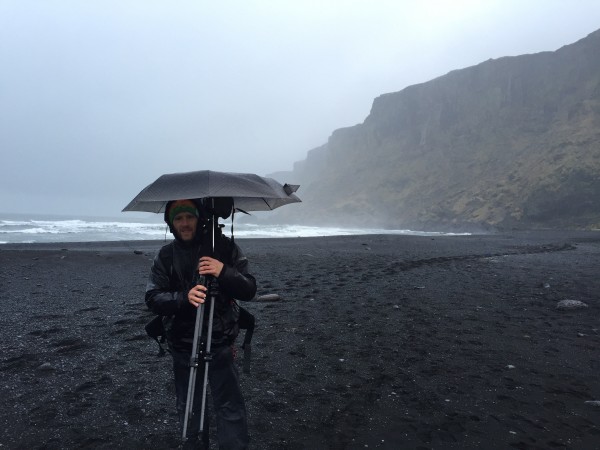
PHOTOGRAPHY Benjamin Kaufmann STYLING Jose Herrera @ Talents Madrid MAKEUP Alice Ghendrih @ Artlist Paris HAIR AND HEADPIECES Oliver Lebrun @ Jedroot Paris MODEL Dajana @ Premium Models und Sofie Nielander @ Karin Models ASSITANT Tom Fawcett POST PRODUCTION Rubix London STYLING ASSISTANT Samuel Sanz und Frank Jymz CAMERA Leica S (TYP 007) with Summarit-S 35 f/2.5 Asph. (CS), Summarit-S 70mm f/2.5 Asph. (CS), Apo-Macro-Summarit-S 120mm f/2.5 (CS)
Fascinated by the nature, landscapes and breath-taking light found in the northern reaches of the planet, Benjamin Kaufmann produced ‘Norður’, an unusual combination of high fashion, beauty and Icelandic panoramas. Raw motifs taken from Nordic nature find visual counterparts in abstractly-futuristic fashion, make-up and hair-styling productions.
S Magazine: Your father is a photographer, you mother runs a graphic design agency – does this mean that your profession was more or less inevitable, and what finally led you to photography?
Benjamin Kaufmann: Looking back, one could say that my career was pre-programmed. As far as my parents were concerned, their professions and privates lives were always intertwined, which meant that I got a sense for both fields – photography and graphic design – from an early age. I accompanied my father on many trips and often assisted him. I also worked at my mother’s graphic design studio while I was still at school – it was probably even comparable to an apprenticeship.
They instilled curiosity, the creative urge and the principle of never giving up, in me. These are all things you absolutely need if you decide to follow a freelance career. The thing that influenced me the most, however, was my parents’ enthusiasm each time there was a new project. The long hours of work and the great efforts they had had to fight their way through were suddenly forgotten...
After graduating from high-school and doing my military service, I first decided to study business administration. Even though I found the subject exciting, I still always moved towards the same direction as my parents. For sure, it probably had something to do with the fact that I financed my studies by working in the family business, and also realised how much I enjoyed the practical side of the work.
At some point I turned to photography full time. I worked as an assistant for three years in Munich and in Madrid, rounding off my practical experience with an academic Masters in London.
You’re a fashion and beauty photographer, but you often mix landscape elements into your work. Why?
I grew up in the country and, when I was a child, I spent all my free time in the forest near our house. I always had this close relationship to nature, and nowadays I still need this to offset living in London. So, whenever I was travelling for myself, I mainly photographed landscapes. It was Swarovski that then gave me the decisive opportunity to also do so professionally.
Nature doesn’t only serve to bring balance into my life, it’s also my greatest source of inspiration. Light, colours, shapes, textures – for me there are few things that offer more diversity than nature.
In the coming years I plan to further develop this combination of fashion, beauty and nature. All the areas have so many things in common that I want to explore.
You shot ‘Norður’ (North) for the S Magazine. How did you come up with the idea and how were you able to carry it out?
Back when the photographer Rui Faria was proposing me for the Leica magazine, I was just putting together my new portfolio. While do so, I had also been feeling the urge to return to the primeval world. The possibility of doing a series in complete freedom and for a renowned magazine, quickly led to the idea of a winter trip. The concept was based on pictures I’d researched that were taken on Iceland – a destination that had long been on my wish list.
We first photographed the fashion/beauty part in Paris. It was only after finishing those that I flew to Iceland looking for complementary motifs. I am, of course, particularly happy with the fact that the resulting photos had such a close connection to the pictures of the models.
How important do you find working with the crew, the fashion, make-up and hairstylists, and the models?
Collaboration was the most important element of this project. It’s only when an idea is brought to life by the individual creativity of each team member, that something new can emerge. Motivating each other as well as constructive criticism produce particular dynamics and power.
Alice Ghendrih (make-up) and Olivier Lebrun (hair) were a dream team who not only understood the theme, but who also brought their personal interpretation into an abstract art form. As futuristic and outlandish as they are, the clothes obviously also played a particular role in the series.
The styling defines fashion images more than anything else. The clothe items are the central element. In this case, stylist José Herrera took on the inspiration of Iceland in a very precise way. All the colours, shapes and structures can be traced directly back to the nature of this unique island. It is amazing how, as far as I’m concerned, José’s interpretation totally hit the nail on the head, even though he only had pictures of Iceland to work with.
How was it for you to have complete creative freedom for our series? Do you often have such freedom?
Luckily, there have been a few occasions where I’ve been asked to apply my own particular style to campaigns and editorials. Being the author rather than just the doer should be the goal of any artist. I consider this a sign of great recognition and praise for my work. One’s own opinions and convictions create the core of every creative performance.
In principle, I enjoy the whole cycle. Ideas are developed, rejected, changed and refined until, finally, an idea emerges that you can communicate. The preparations, planning and then the realisation are very exciting and dependent on so many factors, meaning that you always have to remain on the ball.
Coming back to the detail of my parents’ enthusiasm – I think that’s something I picked up from them: I’m happy when I’m standing in front of a successful project and can start thinking about the next one.
How did you find working with the Leica S? Do you see differences to other systems?
I was already working a lot with a classic Leica M6 early on. The S model is another piece of mastery, individual and unique like the Leicas before it. Because they are precision instruments, the cameras have always moved me to photograph in a concentrated and more aware manner.
A couple of the landscape photographs would have been unimaginable a couple of years ago. To be able to take wonderful photographs of the river bed at a noisy waterfall, after sunset and with the little remaining light, (at 3200 ISO), offers a technical freedom that never existed before.
At the same time, you can also achieve brilliant results in the studio and under controlled conditions. The Leica is incredibly versatile, and that’s why felt safe in every situation.
What connection to do you have to Iceland? Its landscapes appear quite frequently in your work.
The trip to Iceland was the first time I visited the island for any amount of time. Many of my northern landscapes were taken in Greenland.
I feel a magical attraction to deserts, mountains, forests, and the north in particular. All the kinds of places where people can only live if they adapt to the extreme conditions – even in our highly technical age. Places that remind you of the origins of this world, infusing respect and provoking child-like amazement.
What photographic projects would you still like to realise in the future?
My next bigger project will be an exhibition. I feel like I’m gradually getting to the point where I’m ready to show a selection of my work. The series for the S Magazine has set a direction, now it’s a question of a concrete application of the individual themes that I want to present.
I will continue trying to use my photography as a way to communicate subjects that are close to my heart. For sure, this includes my regular contributions to social projects. Ideally, with increasing success, I will have more resources to apply in a meaningful manner. I don’t suffer from a shortage of ideas…